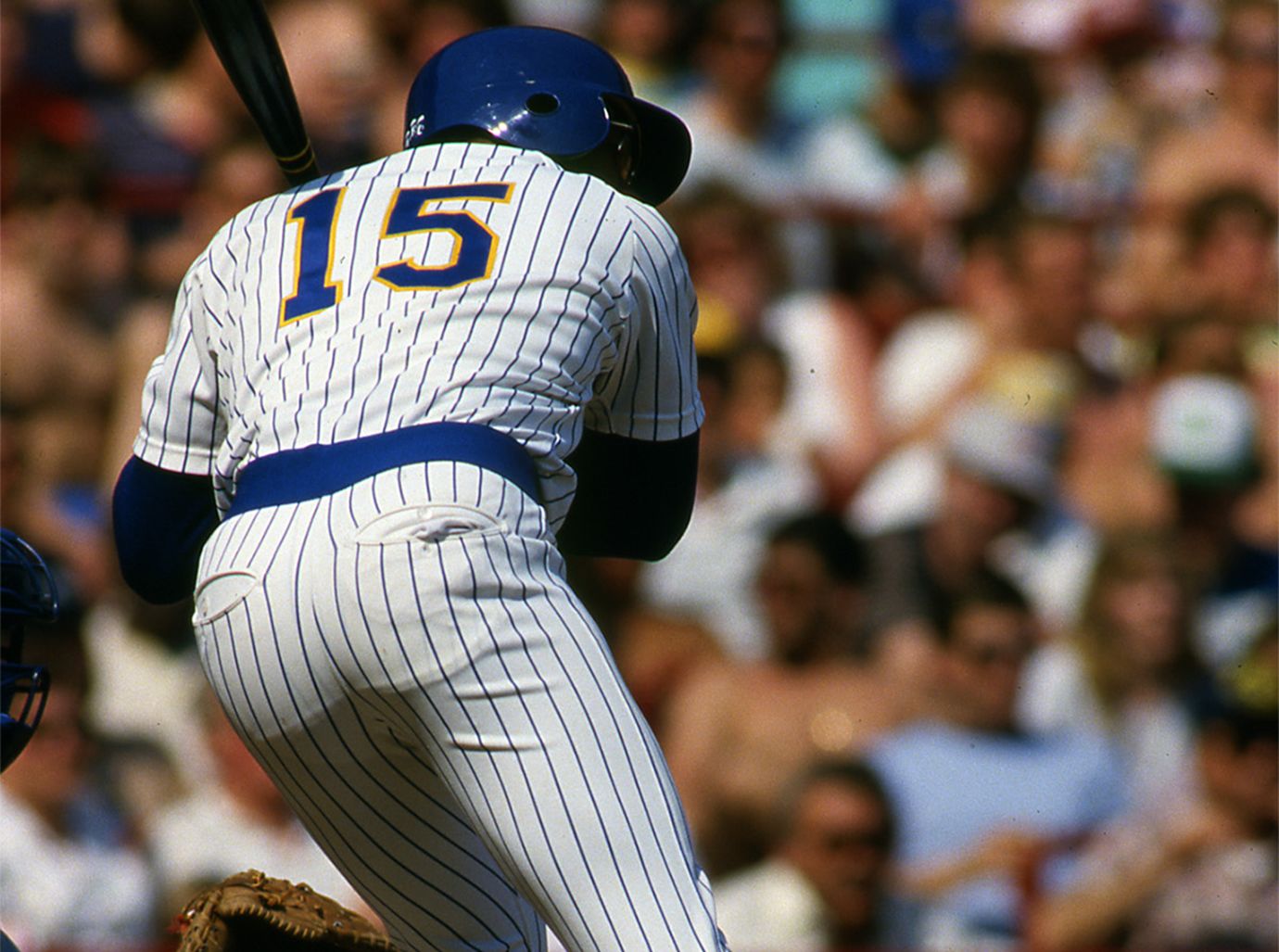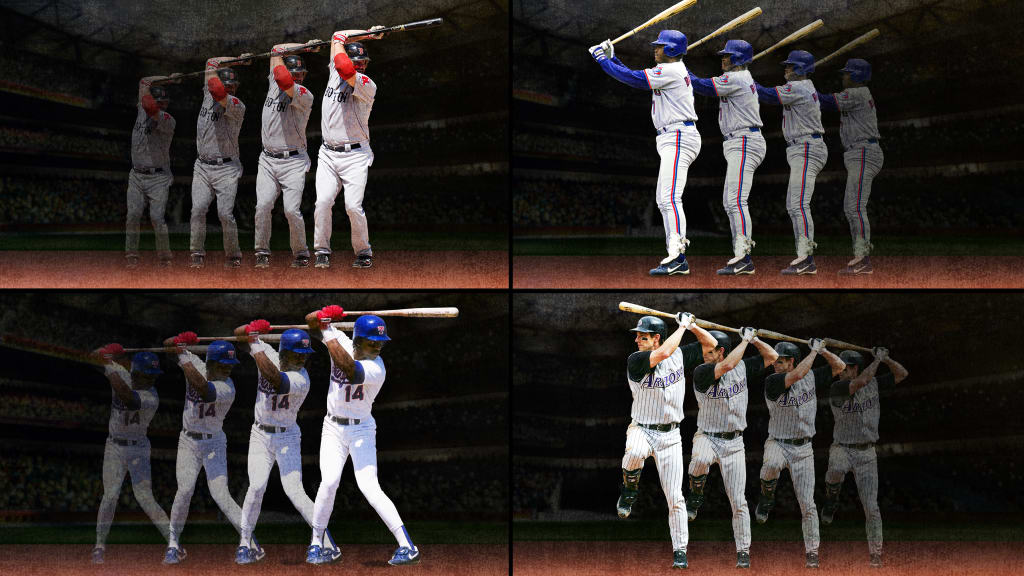This story was excerpted from Adam McCalvy’s Brewers Beat newsletter. To read the full newsletter, click here. And subscribe to get it regularly in your inbox.
KANSAS CITY -- Matt Erickson was 28 years old in 2004 when he reported to Triple-A Indianapolis, but he might as well have been an 8-year-old kid back in Central Wisconsin. Erickson’s manager was former Brewers great Cecil Cooper.
The first time Erickson stepped into the batting cage, leaned way back and held his bat loosely in his hands parallel to the ground, Cooper smiled. That stance was Cooper's trademark while compiling 2,192 hits over 17 seasons in the big leagues.
“I pointed to myself,” Erickson said, “and said, ‘Hey, Appleton, Wis.’”

Sometimes the best questions come up in the car ride to or from a baseball game, and in the interest of full credit, this one came over the weekend from the mind of the Milwaukee Journal Sentinel’s Todd Rosiak:
What happened to baseball’s strange batting stances?
“Now that you say that, that’s a very good question,” said Brewers associate manager Rickie Weeks, whose own stance was memorable for a dramatic bat waggle ala fellow former Brewers super-prospect Gary Sheffield. “I’ve never thought about it until you bring it up. But you’re right.”
Brewers first baseman Rhys Hoskins was similarly stumped, though he pointed out that in the end, even the most bonkers batting stance was merely a way for a hitter to get his hands to a common loaded position. In a former era, some of those methods were pretty wacky. A survey of the Brewers' clubhouse brought mentions of extreme open stances (Tony Batista for Toronto native Tyler Black), leg kicks (David Justice for Brewers pitcher Wade Miley), bat waggles (Barry Bonds for Hoskins), low hands (Eric Davis for hitting coach Ozzie Timmons), tush shuffles (Tim Teufel for senior director of media relations Mike Vassallo) and protruding posteriors (Rickey Henderson for director of team travel Dan Larrea).
There’s also whatever you call the bat overhead pointed directly at the pitcher perfected by Julio Franco (a favorite of manager Pat Murphy) and Kevin Youkilis (Bostonian Sal Frelick).
And every conversation included a mention of Craig Counsell, who reached his hands so high over his head that you’d think he was trying to unscrew a stadium light bulb.
Answers came in three somewhat interconnected categories:
1. Velocity
The No. 1 answer on our board is obvious. The past six seasons have produced the top six average fastball velocities of the Statcast era, with the past two years leading the way.
“The game is too fast for extra movement,” said co-Brewers hitting coach Connor Dawson. “Sliders are 90 mph now, on top of 100 mph fastballs. You just have less time to get all of that work done to get here.”
As he finishes the sentence, Dawson clenches his hands around an imaginary bat and holds them in the ideal hitting position.
“I think you have to have less movement in everything,” he said. “I think that’s why you see way less in the way of leg kicks now. A lot of people have taken them away because the game is really fast. That’s the No. 1 thing.”
But there’s also…
2. Biomechanics
For Cooper and Rod Carew, it was about feel. Carew told a fan a couple of years ago that he crouched because it helped him avoid Nolan Ryan’s high fastballs -- “He eventually yelled at me to 'Stand up!' I didn’t,” Carew said.
But more and more, hitting is science. A couple of Brewers coaches mentioned video as a factor. Budding ballplayers pore over YouTube and MLB.com highlights to study their favorite hitters frame by frame in search of simplicity, and that’s coupled with increasingly sophisticated instruction.
“It’s people wanting to be exact with how they move,” Dawson said. “The information of how we move wasn’t necessarily available 15-20 years ago. There’s exact ways we’ve been told we should move, which takes out a lot of the creativity.
“Now we have to get to position A, B and C, vs. watching the 1982 Brewers and those guys are all moving freely and athletically. They’re not worried about, ‘I have to load my scapula.’ The player of today, he’s worried about that. It’s taken a lot of the creative juices out of how people allow themselves to stand in the box.”

3. It’s a copycat league
Mike Trout, Mookie Betts, Ronald Acuña Jr. and the other best hitters of today all have their own hitting style, but they certainly are not in the category of bizarre. So, more and more young players are keeping it simple themselves.
Timmons explains this concept with a specific player in mind.
“Everybody wants to recreate players. They want everybody to be in the same mode,” said Timmons. “A perfect example is Mike Brosseau. When he came to the Rays, he was so unorthodox in the Minor Leagues, and he just hit, hit, hit. Then he started thinking too much.
“But you don’t change people if they’re having success -- at least I don’t think. If you see a guy, don’t say, ‘What the hell are you doing?’ I start with, ‘Help me understand why you’re doing what you’re doing.’ I always think if I try to put a hitter in a different position too soon, he’s not going to be comfortable. But not many people are thinking like that, and that’s why I think unorthodox stances are going away.”
Timmons prefers a much more patient approach, resisting the urge to grade a hitter until he’s seen 100 at-bats. That’s what makes Spring Training so important. And it’s why the Brewers let Joey Wiemer be Joey Wiemer last season, with all of the young outfielder’s moving, twitching parts, before he worked last winter on a more standard stance.
Speaking of current Brewers, there’s one other notable category on the roster: The William Contreras model. Coaches and teammates chuckle at the way he seemingly comes up with a new way to hit every time he digs in at home plate.
“He’s got about 40,000 different stances,” Dawson said.
It’s been working. The various versions of Contreras have been the Brewers’ MVP since the start of last season.
